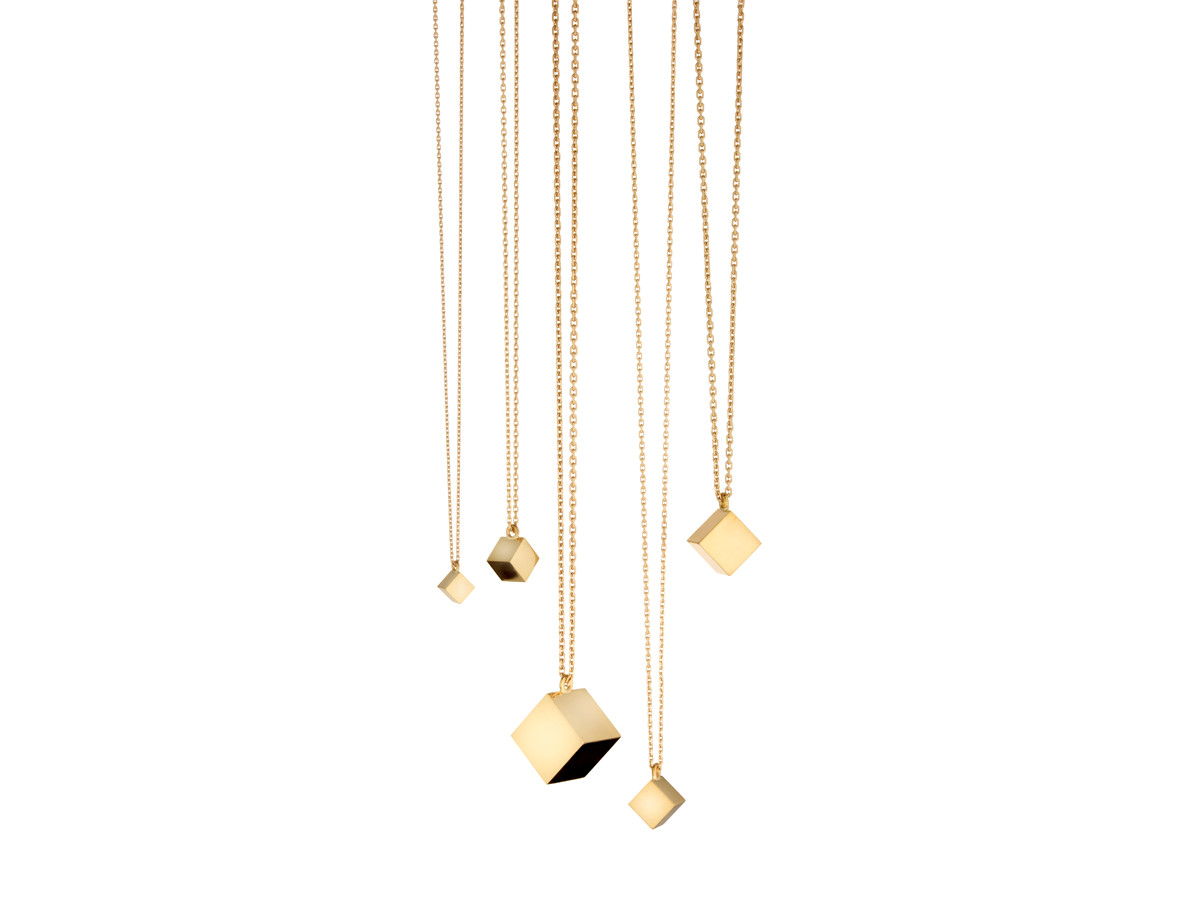ALICJA KWADE - »GOLDVOLKS«

Art Berlin Contemporary, 17. September – 20. September 2015
Studio Georg Hornemann and gallery König Berlin are pleased to present a new work by Alicja Kwade titled GoldVolks, which consists of ninetyseven gold cubes on chains and will be on display at this year’s art berlin contemporary.
After collaborations with Rita McBride, Kris Martin, and Bazon Brock, GoldVolks is the fourth in a series of projects which we have jointly realized with selected artists. Our interest in these artist collaborations is the interdisciplinary development process which combines the goldsmith's craftsmanship with a conceptual, artistic approach to create one of a kind objects reaching beyond the conventional conception of jewelry making.
Kwade examines the genesis and application of structures of reality that are based on social conventions - cultural patterns, tacit agreements, and codes - in sculptures, installations, and photographs that combine aesthetic appeal with a challenge to our habitual ways of looking at things.
GoldVolks grew out of Kwade’s interest in the national gold reserves kept by most countries’ central banks. Until 1973, they served as backing for currencies (a system known as the gold standard). Now gold reserves are maintained to hedge against fluctuating US dollar exchange rates and provide for periods of crisis. Since gold is universally accepted as a means of payment, large gold holdings suggest a country’s high degree of independence. Ninetyseven countries officially quantify their gold reserves; statistics are available from the World Gold Council. In 2015, Germany is second on the list with reserves of 3384.2 tons; the United States holds the top spot, with 8,133.5 tons, while Lebanon, for instance, is 19th, with reserves of 286.8 tons.
Kwade took the ninetyseven listed gold reserve holdings and divided them by each country’s official population (CIA World Fact Book). The goldsmith Georg Hornemann then cast these percapita amounts of fine gold into the simplest possible geometric shape, a cube; the objects are presented like pendants on gold chains. Kwade’s cubes, in other words, represent the gold hypothetically owned by each citizen - what each of us would receive if our countries’ reserves were distributed to the citizenry. In this ranking of percapita reserves, Germany is third, while the United States fares even worse, slipping down to thirteenth place; the Lebanese cube, on the other hand, is unusually large, second only to the Swiss.
Hung one next to the other in a glass case, the gold pendants illustrate a measure of the global distribution of wealth, allowing for a visual and tactile experience of an abstract numerical ranking. During art berlin contemporary, Kwade will ask visitors to wear a chain, perhaps their own country’s. Chains of countries that no one is willing to represent will remain inside the case. Wearing one of the gold pendants may inspire a feeling of sharing in a country’s wealth, even if its prosperity is not necessarily enjoyed by all its residents.
The abstract value of gold is still regarded as the best safeguard in times of crisis. And although the gold price is fixed by the members of a small “financial elite,” the London Bullion Market Association, as they see fit, the worldwide political, economic, and cultic faith in this value—the relative significance of each aspect varies from place to place—has been almost unshakable for centuries. The gold cube on a chain is thus not only a symbolic gesture claiming the wearer’s theoretical share, it also signals his or her faith in the precious metal— the cube, in this perspective, becomes a symbol of belief.
Alicja Kwade (b. Katowice, Poland, 1979) lives and works in Berlin. In time for abc 2015, she will inaugurate a solo exhibition at Haus am Waldsee in Berlin - Zehlendorf. A few days earlier, Public Art Fund will present her new work “Against the Run” in New York’s Central Park.
Earlier solo shows of Kwade’s art have been on display at Kunsthalle Nürnberg, Nuremberg, in the rotunda at Kunsthalle Schirn, Frankfurt am Main, and at Kunsthalle Mannheim. Her work has also been featured in numerous international group exhibitions and is held by private and public collections in Germany and abroad, including the German Federal Collection of Contemporary Art, Bonn, the Mudam Luxembourg—Musée d’Art Moderne Grand-Duc Jean, the DekaBank Collection of 21st Century Art, KAI 10 | ARTHENA FOUNDATION, the Olbricht Collection, the Boros Collection, the Kunstmuseum Sankt Gallen, the Kunstsammlung Nordrhein-Westfalen, the Vehbi Koç Foundation, and the Reykjavik Art Museum.